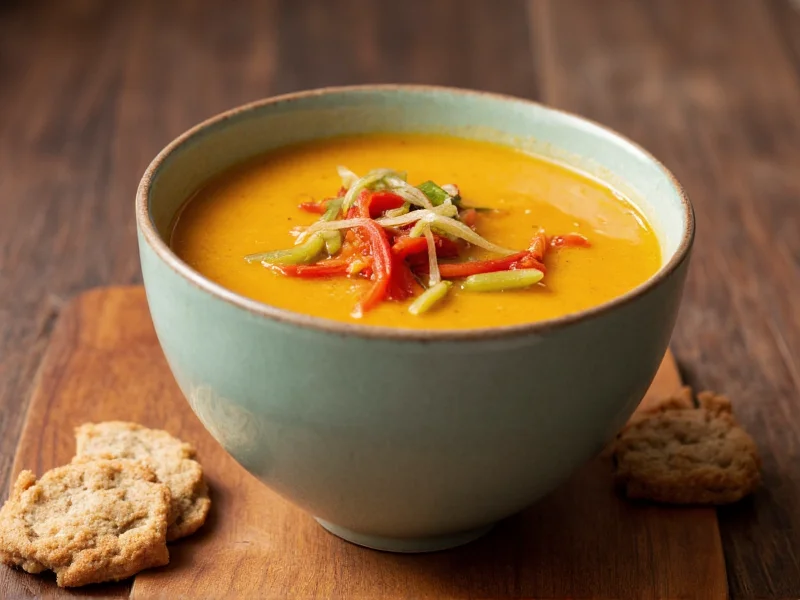Understanding the phrase 'cup a soup' requires examining both linguistic patterns and commercial products. Many English learners and even native speakers encounter confusion between 'cup a soup' and the more standard 'cup of soup' construction. This article clarifies the distinction while providing practical information for those searching for instant soup solutions or linguistic explanations.
The Cup-a-Soup Brand: More Than Just a Phrase
Cup-a-Soup represents one of the most successful instant soup product lines in British grocery history. Launched in the UK during the 1970s by Batchelors, this single-serving soup format revolutionized quick meal preparation. The distinctive red and yellow packaging became a household staple across Britain, Ireland, Australia, and New Zealand.
Unlike traditional soup mixes requiring separate bowls, Cup-a-Soup comes in its own disposable container with a sealed lid. Consumers simply add boiling water, stir, and enjoy soup directly from the cup. This convenience factor explains its enduring popularity, particularly among students, office workers, and anyone seeking a quick hot meal without cleanup.
Linguistic Perspective: 'Cup a Soup' vs 'Cup of Soup'
The grammatical construction 'cup a soup' follows a pattern more common in certain English dialects, particularly British English. While 'cup of soup' remains the standard grammatical form in formal writing, colloquial speech often features reductions like 'cuppa' (from 'cup of').
This linguistic phenomenon, known as 'intrusive a,' occurs when speakers insert 'a' between words where 'of' would traditionally appear. You'll hear similar constructions in phrases like 'paint a picture' instead of 'paint of picture' or 'a cup a tea' rather than 'a cup of tea.' These variations represent natural language evolution rather than grammatical errors.
| Region | Common Phrasing | Brand Availability |
|---|---|---|
| United Kingdom | Cup a soup (colloquial), Cuppa soup | Widely available |
| United States | Cup of soup | Limited availability |
| Australia/New Zealand | Cup a soup, Cuppa soup | Widely available |
| Canada | Mixed usage | Moderate availability |
Practical Guide to Using Cup-a-Soup Products
For those who've purchased or are considering trying Cup-a-Soup products, proper preparation ensures the best experience. Follow these steps for optimal results:
- Remove the sealed lid carefully
- Pour 180-200ml of freshly boiled water into the cup
- Stir thoroughly for 30 seconds to dissolve all powder
- Replace the lid and let stand for 2-3 minutes
- Carefully remove lid (steam can be hot) and enjoy
Many consumers enhance their cup a soup experience by adding extras like grated cheese, croutons, or a dollop of cream. The standard serving provides approximately 100-150 calories depending on variety, making it suitable for light meals or snacks.
Regional Availability and Alternatives
While Cup-a-Soup remains most prevalent in British Commonwealth countries, similar single-serve soup products exist globally. In the United States, brands like Progresso and Campbell's offer comparable 'soup to go' products, though they typically require transferring to a separate bowl.
For those outside regions where Cup-a-Soup is sold, creating your own version is straightforward. Simply combine dehydrated soup ingredients in individual portions using small heat-safe containers. This homemade approach allows customization of flavors and ingredients while maintaining the convenience factor that makes commercial cup a soup products so popular.
Common Misunderstandings Clarified
Many searchers confuse 'cup a soup' with proper measurement terminology. A 'cup' in cooking refers to a standardized volume measurement (8 fluid ounces or 240ml), not the container. When recipes specify '1 cup of soup,' they mean the volume, not necessarily soup served in a cup.
Additionally, some non-native English speakers mistakenly believe 'cup a soup' represents incorrect grammar. While formal writing prefers 'cup of soup,' the 'cup a soup' construction follows established patterns in informal speech across multiple English varieties. Linguists consider this a legitimate dialectal variation rather than an error.











 浙公网安备
33010002000092号
浙公网安备
33010002000092号 浙B2-20120091-4
浙B2-20120091-4